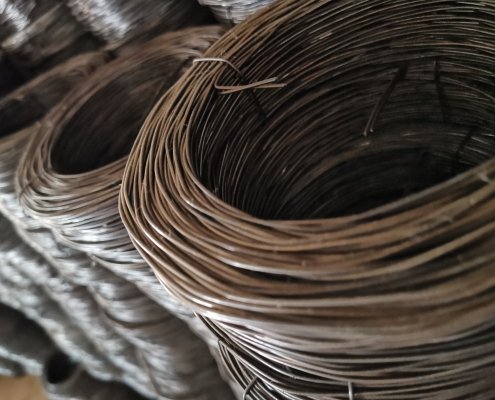Twisted annealed wire
What is twisted annealed wire?
Twisted annealed wire is well known in Brazil market. People use it to tie the steel rebar bar in everywhere and everyday.

brazil arame recozido black annealed wire 
arame recozido black annealed wire
So many importers import “ARAME RECOZIDO TORCIDO N18 KG TRIANGULO KG 10” from China. Dingzhou BEST hardware Co., Ltd. as a twisted annealed wire manufacturer in Hebei, China over 30 years.
For Brazil market, BWG18, two strands twisted, 1kg per roll, 10rolls or 20rolls per carton. 1*20ft, can load with 27tons max weight.
Twisted annealed wire how can find?
Generally, at the beginning of the works that follow the specific regulation for construction in general, some iron bars are found inside the bricks in certain parts of that construction. It is these materials that we will cover today.
At the end of our explanation, we brought some recommendations from hardware stores that are in the city of Itapema, in Santa Catarina.
Hardware is essential at the base of any work and needs to be chosen in the most adequate way possible, in order to guarantee excellent support for the work as a whole.
For this reason, it is so important to understand the types of hardware that are most used, as well as the moment in which this hardware is used.
When you understand better the process for choosing this material, you are one step closer to guaranteeing a work of great quality.
Hardware is necessary for both construction and renovation, so let’s now understand better about it.
What is hardware?
Iron has been in our society for a long time, standing out both as an important ore and for its role in civil construction.
Know the hostry of hardware
The first uses of iron wire registered in the late nineteenth century, and at that time iron was already used in reinforced concrete structures.
To date, iron is still used for reinforced concrete purposes, as it demonstrates an advantage in combining the high compressive strength of concrete with the tensile strength of iron.
In construction, for example, hardware is used in the most diverse ways, such as the format of beams or columns. However, the most common ways are still the transfer bar and rebar.
To choose the correct hardware for your type of construction, it is necessary to take several points into account. As it will play a very important role, which is to help support and secure the work, to avoid any type of problem in the future.
What are the main types of hardware?
It is necessary to take into account not only the material specifications but also the main types of hardware. As well as their indications and other additional information.
All this serves to ensure work with safety and durability.
How to get
- Rebars: rebars are steel bars that, when added to concrete, form the known reinforced concrete.
Rebars are mostly used in structures whose construction is made of beams or pillars.
When purchasing the waves, you can find them in straight or bent bar formats. In the case of bent, the rebars are cut and bent to the precise shape for their construction.
Why use twisted annealed wire
- Twisted annealed wire: these wires are specifically used for fixing rebar to reinforcement made of reinforced concrete. You can find it in rolls of 30 kg or 1 kg.
As its characteristics are predominantly mechanical, you can use the wires in operations that require twists and bends. Such as the reinforcement ties of reinforced concrete.
Even if you are dealing with plain steel, the wire is malleable because of its low carbon production.
In this way, wires can be used in the most diverse structures made of reinforced concrete.
- Cordoalhas and wires: these are specific products for prestressed concrete. The main difference between reinforced concrete and prestressed concrete is the type of steel that is used. In the case of serviced concrete, this concrete is reinforced with active hardware.
And in the case of reinforced concrete, passive hardware is used, that is, common concrete with steel beams.
Among the strands and wires, we can mention the greased and plasticized strands (wires that do not adhere to the concrete). The prestressing wires (used mostly in hollow-core slabs). And the adherent strands (used in large constructions).
- Ribbed trusses: are those used in the construction of trussed slabs, after all, their composition is from ribbed CA-60 wires.
Its composition is made from an upper longitudinal wire with two lower longitudinal wires. With the separation defined by two stirrups, in the shape of a sinusoid, in addition to having electro-welded on both sides of this structure. This all forms a spatial structure.


